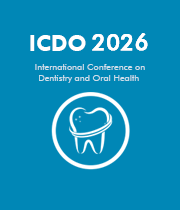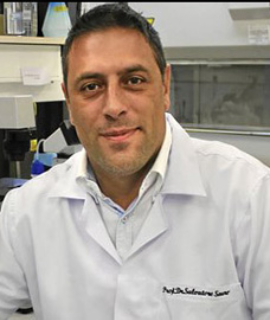Title: Bioremineralising adhesives for long-lasting restorations
Abstract:
The learning objective: Degradation of the hybrid layer causes decreased durability of resin-dentine bonds, and continued destruction of tooth structure. It will be shown how innovative approaches to remineralisation of the resin-dentine interface may protect hybrid layers from degradation over time and contribute to improvements in the durability of resin-dentine bonds.
Dental adhesive systems have improved considerably over the last ten years, although shortcomings such as post-operative sensitivity, premature bond reduction, interface and marginal degradation, and biocompatibility are still considered important issues with such materials. Enzymatic degradation of collagen fibrils within the hybrid layer and hydrolysis of polymers are the major factors thought to destabilise the resin-dentine interface. However, “smart” resin-based materials that can interact therapeutically with dental hard tissues and reduce the degradation of the resin-dentine interface via remineralisation of the mineral-depleted dental hard tissues can improve the durability of resin-dentine bonds. Innovative approaches to remineralise the resin-dentine interface may protect hybrid layers from different types of degradations over time, and have a therapeutic role in caries prevention. Experimental adhesive systems containing ion-releasing fillers with advanced remineralising properties and matrix metallo-proteinases (MMP) inhibitors have been developed and used in combination with resin primers containing Ca-sequestering polyanion acids poly(aspartic acid) (PASA) or poly(acrylic acid) (PAA) and biomimetic analogues of collagen phosphoproteins such as sodium trimetaphosphate to remineralise resin-dentine interfaces. This biomimetic approach is able to evoke a “bottom-up” remineralisation that restores the original stiffness (i.e. Young’s Modulus) of water-rich/resin-poor dentine-bonded interfaces. It will interesting to consider the commercialisation of resin-based materials such as flowable composites and “smart” adhesive systems containing biomimetic reagents that can remineralise and prevent degradation of resin-dentine bonds to enhance their clinical longevity.
Currently there is no existing restorative material able to remineralise hybrid layers and completely restore the modulus of elasticity of mineral-depleted dental collagen structures within resin-bonded interfaces though biomimetic apatite formation at intra-fibrillar and extra-fibrillar collagen level. Hence, the first important concept to consider is that the restorative materials and techniques currently available are not able to immediately remineralise and protect demineralised collagen fibrils present within remaining caries-affected dentine, as well as those within poorly resin-infiltrated water-filled hybrid layers. In such circumstances, collagen will quickly degrade if not properly protected through the application of anti-MMPs agents. However, clinician may create therapeutic restorations that can induce mineral precipitation within resin-dentine interfaces and possibly prevent the re-occurrence of secondary carious lesions Reliable remineralisation of completely demineralised collagen fibrils should be characterised by intra-fibrillar [3, 5, 6] and extra-fibrillar mineral deposition with hydroxyapatite crystals orientated in the same direction as those in sound dentine [6, 159]. Innovative bioactive/biomimetic strategies that lead to remineralisation of hybrid layers have been demonstrated to be able to restore the modulus of elasticity of mineral-depleted dental collagen structures within bonding interfaces [5] to normal values [6]. Thus, it is time academic dental research and dental industry to cooperate more fully in develop of materials with enhanced clinical longevity that can easily be used in dental practice, rather than attempting to improve the formulation of “passive” adhesive systems that can increase the risk for toxicological effects induced by elution of components contained in the light-curable resin-based materials




